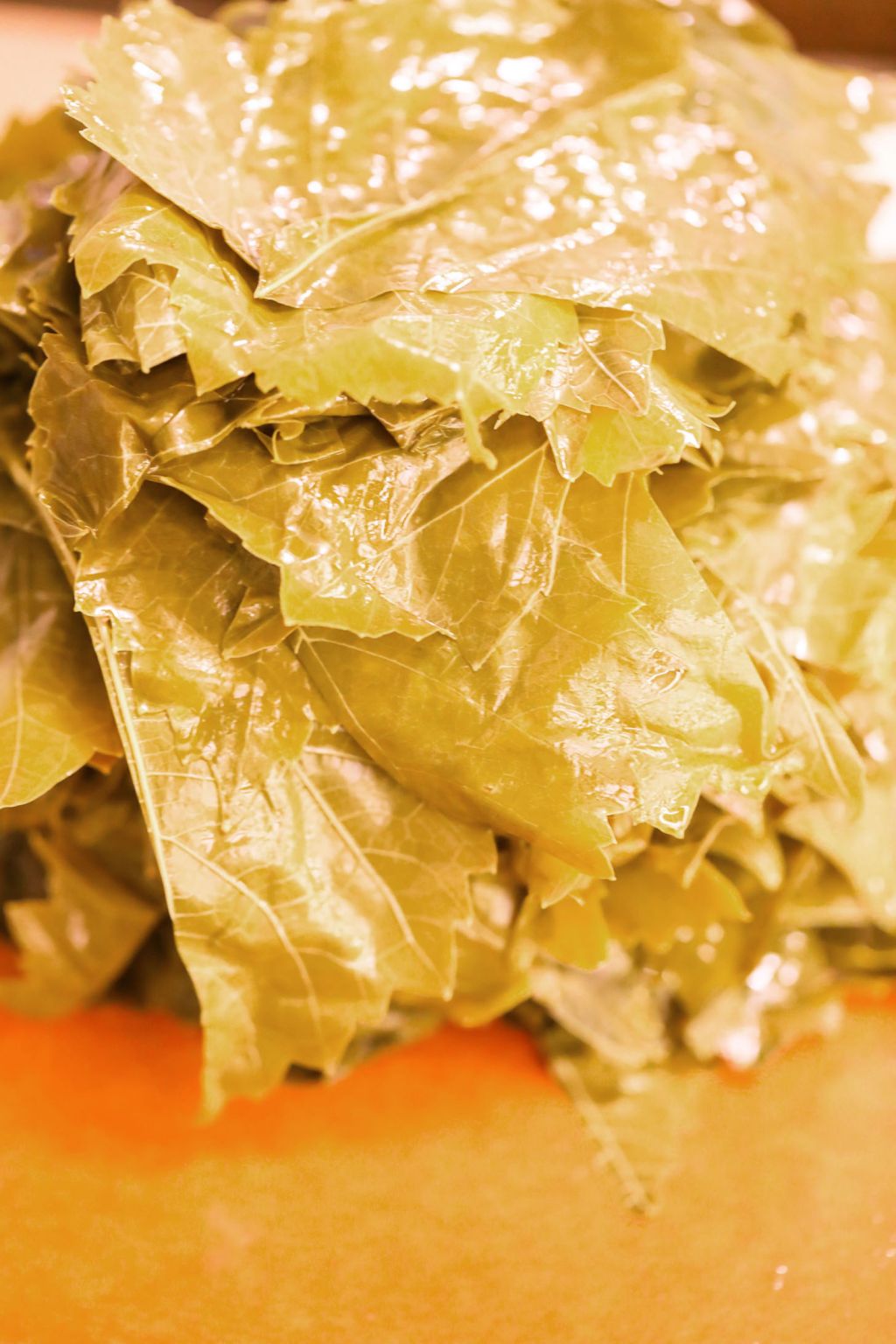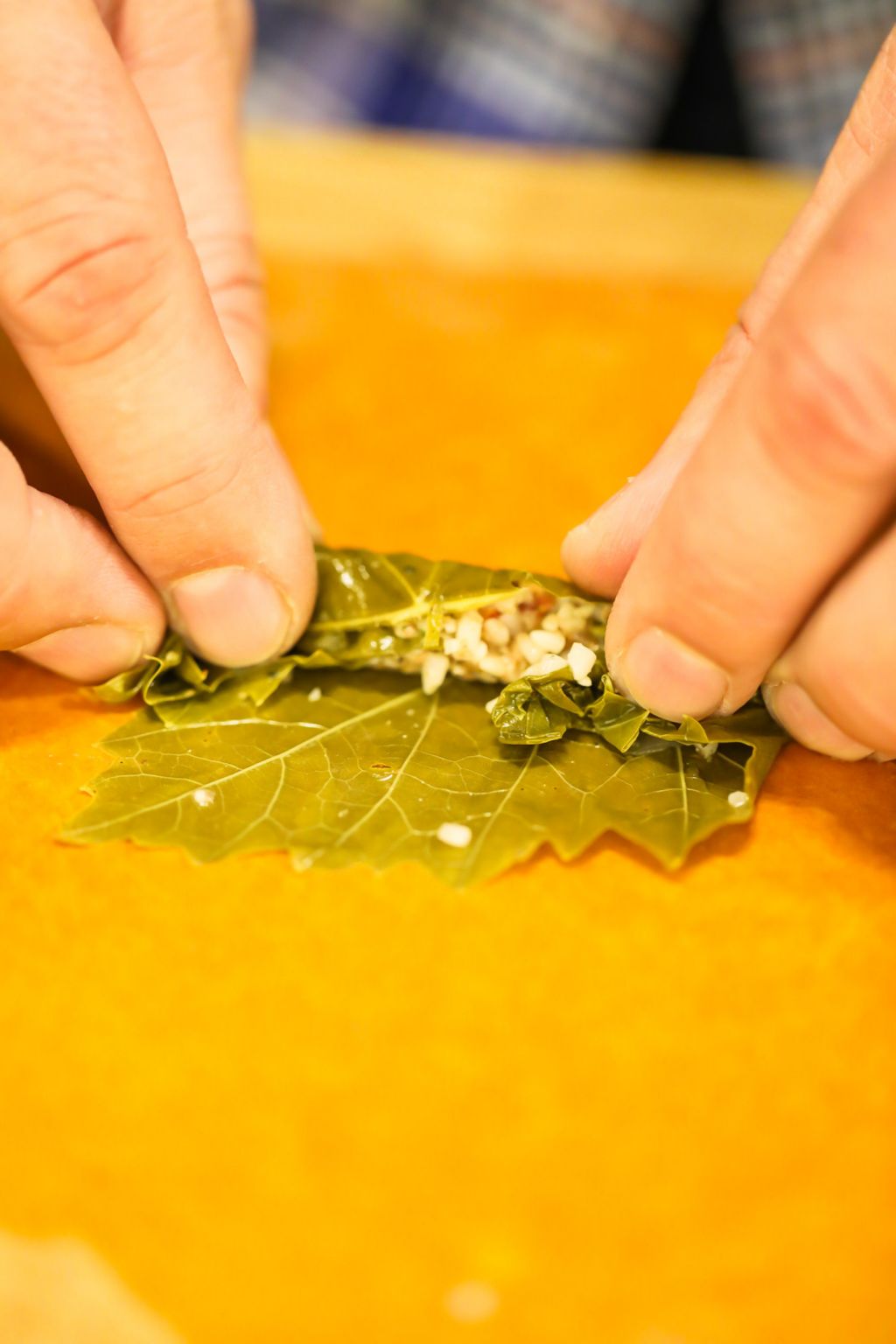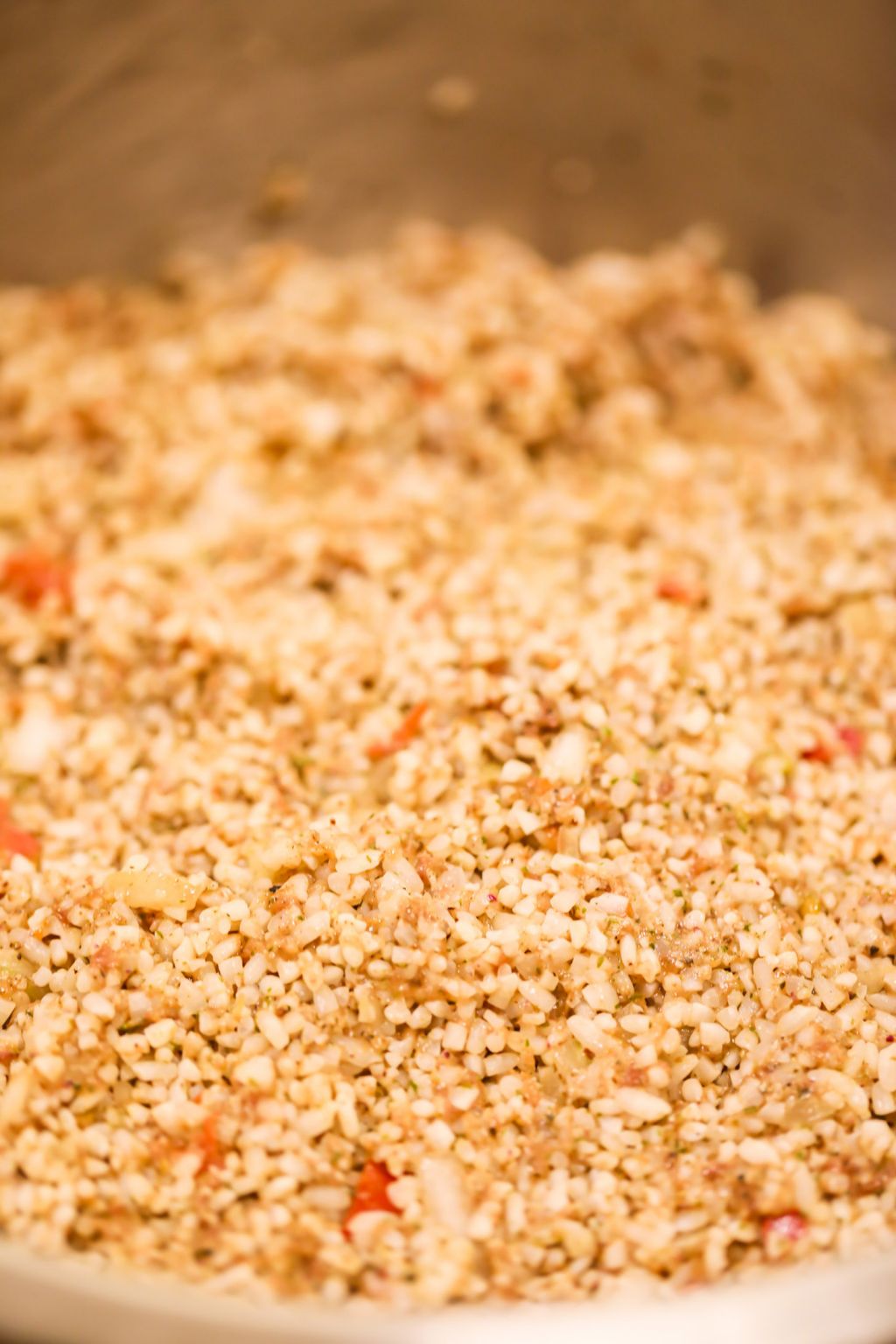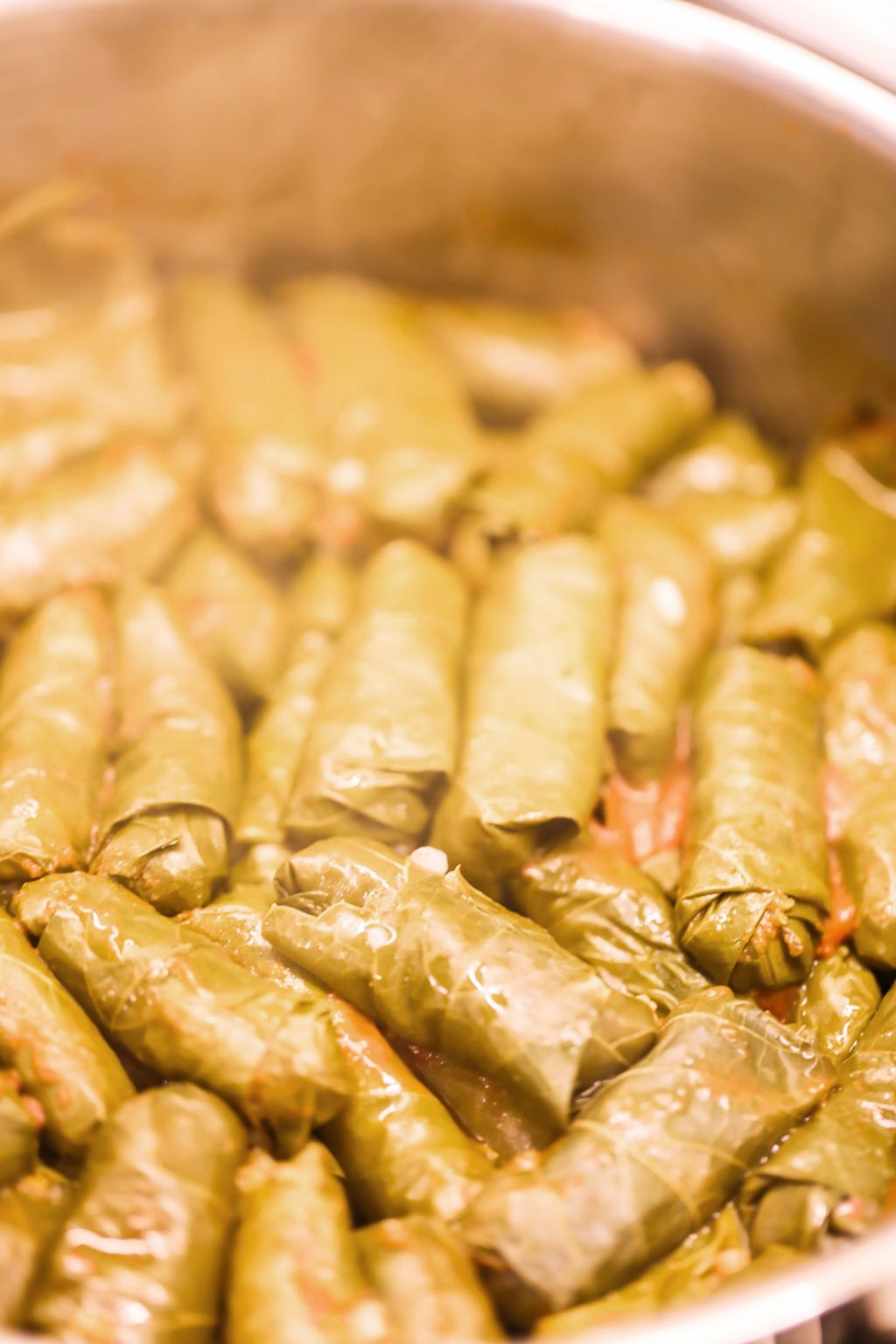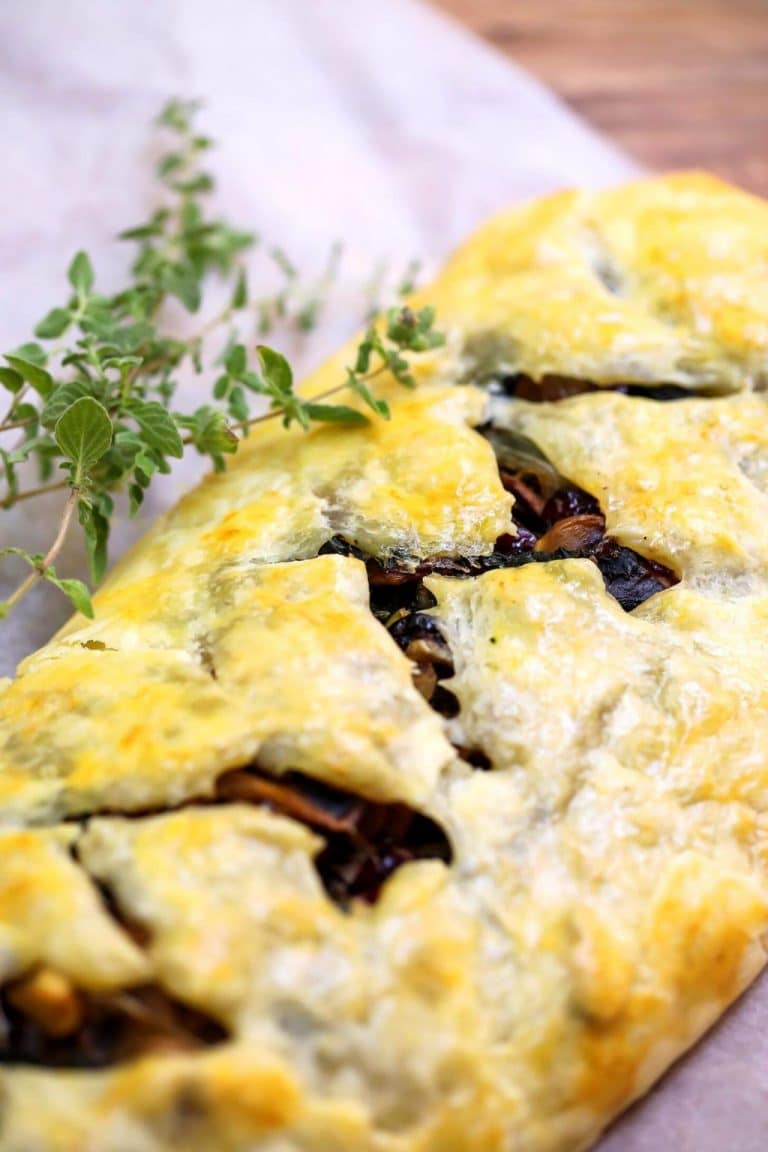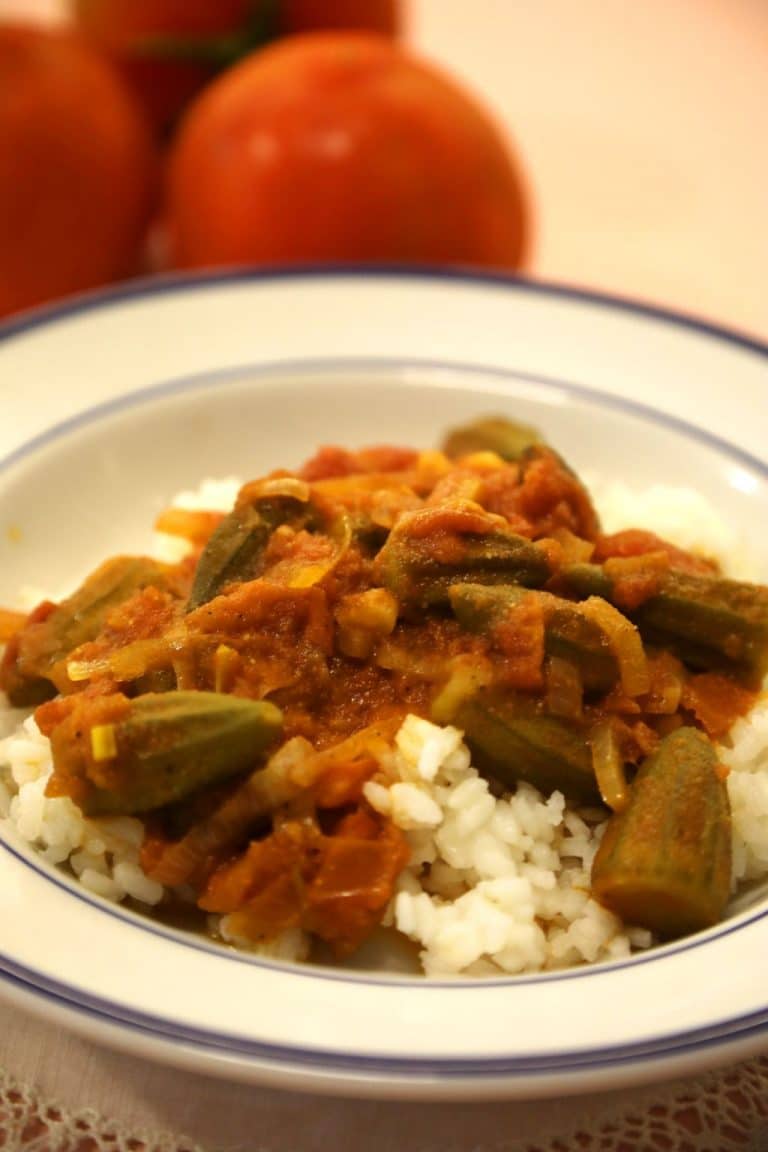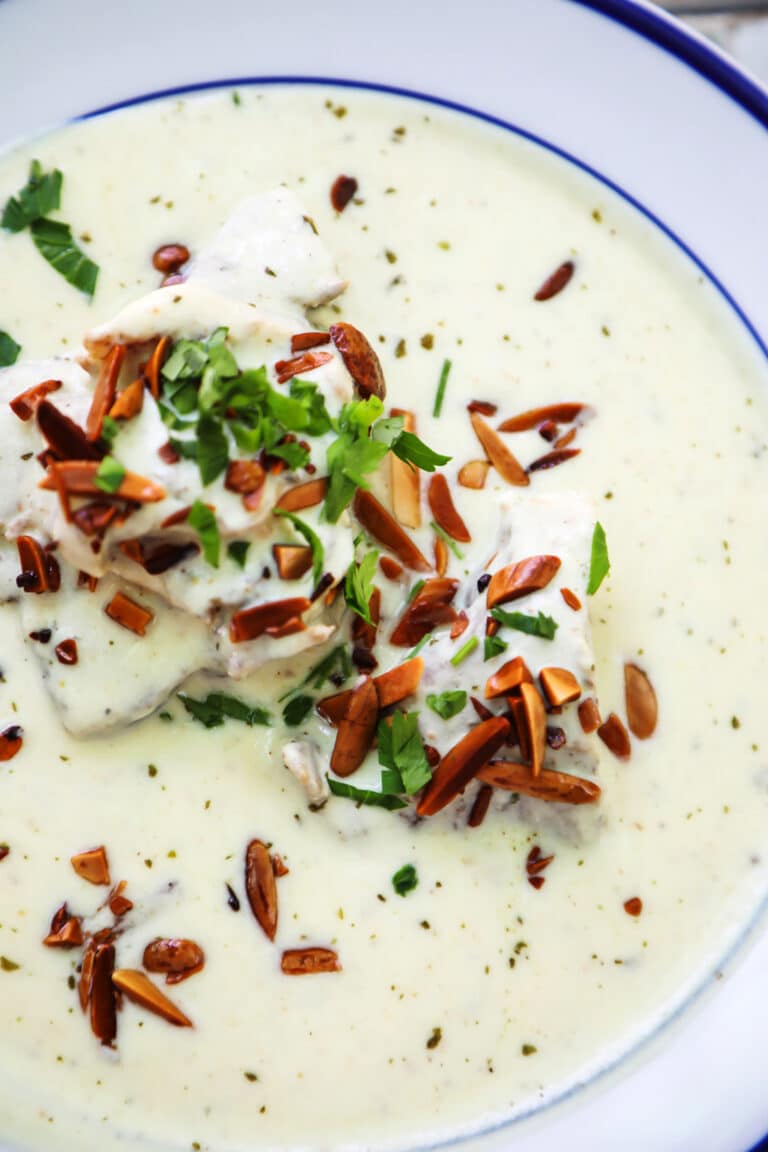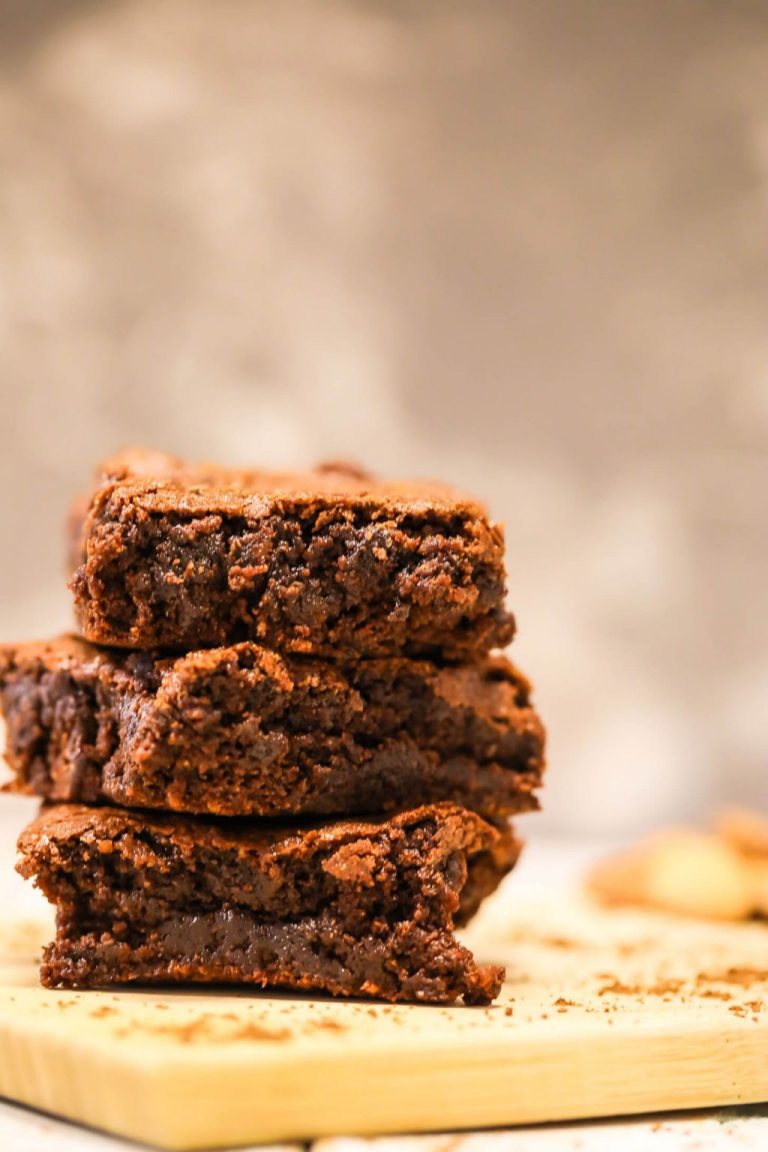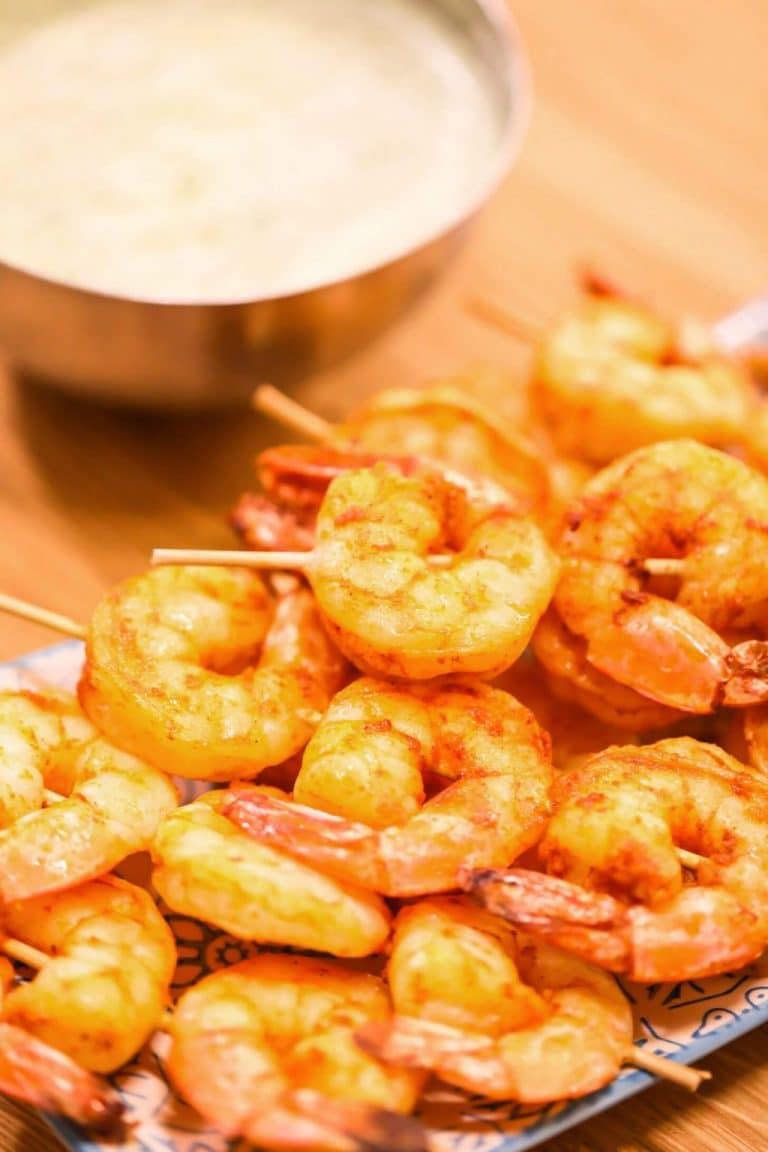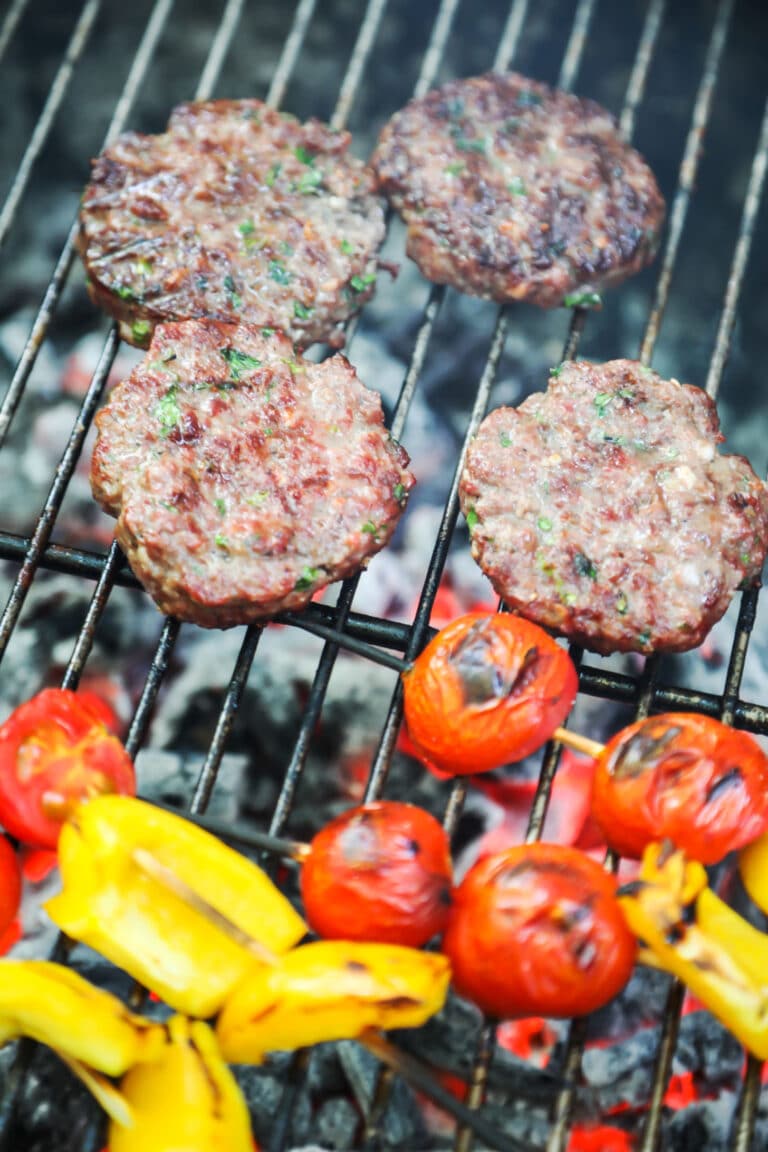Dolmades (Stuffed Grape Leaves) Recipe
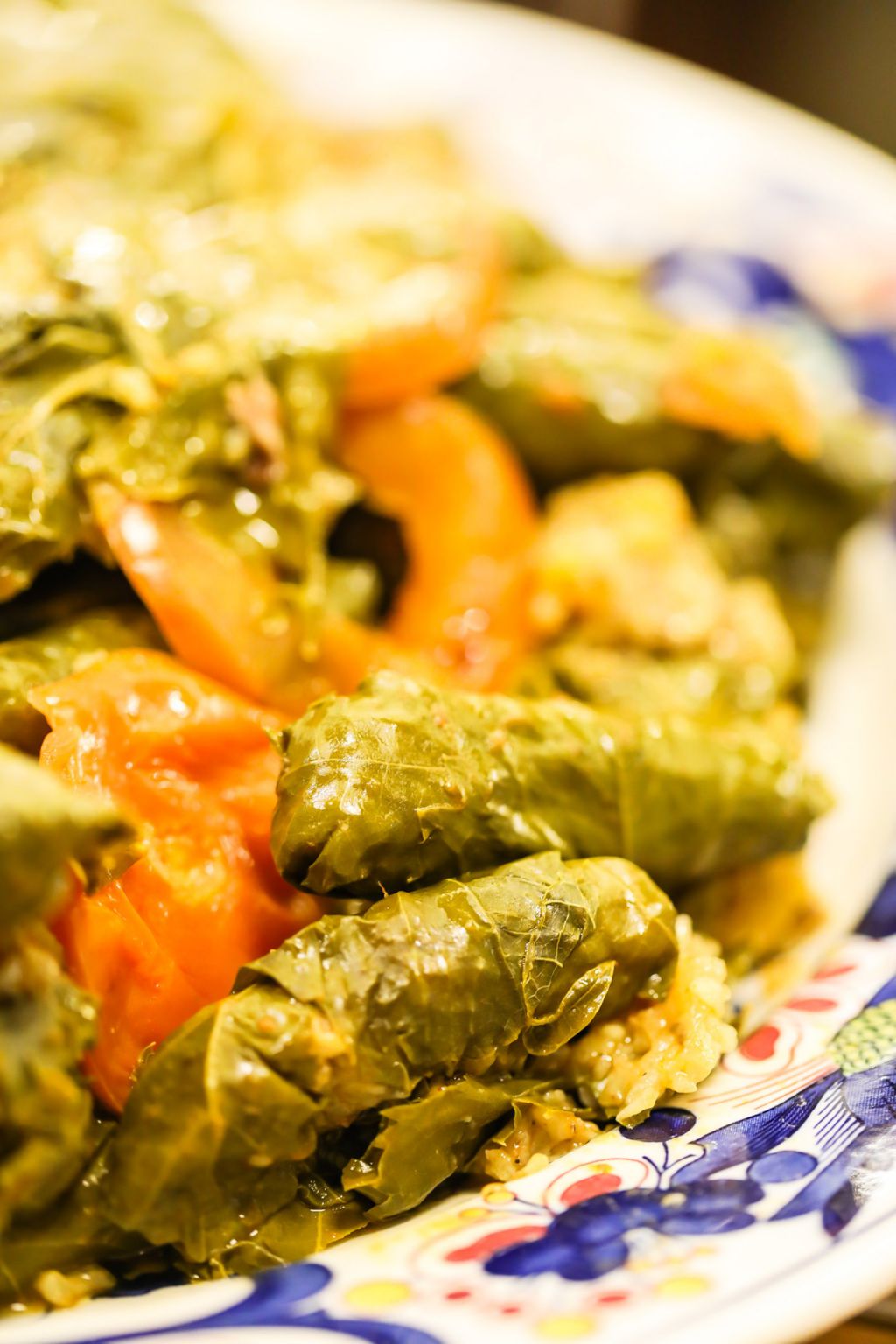
Cooking food in leaves goes back a very long way, and dolmades, or stuffed grape leaves, are no different.
This has to be one of my very favorite meals in the world, cooked Arab style of course.
Dolmades is of course the Greek name that most people are familiar with.
In the Levant they are referred to as warreck enab, an Arabic phrase which simply means papers of the grapes.
Also known as warreck dawali which literally translates as vine papers.
‘Papers’ being the word used for any type of leaves in the Arabic language.
Stuffed Foods
Stuffed vegetables in Middle Eastern cuisine is very common, and the food is widely eaten.
Pick just about any vegetable or leaf and you’ll find it’s most likely stuffed with rice and meat.
Rice and ground meat is a typical stuffing in the Arab and surrounding countries.
Rolling, wrapping or stuffing ingredients allows for the moisture, and in many cases the nutrients, to remain.
Using the steam that builds up internally is the method used to cook the ingredients.
Dolmades is a signal to the people who are invited to eat it that the person who made it cares a great deal about them.
And that is simply because this is a very time intensive dish, of stuffing.
And rolling all those leaves can easily take a few hours depending on your skill level.
One of the only drawbacks to this dish is that it takes time to make.
However, it is definitely well worth the time spent making this dish.
Rolling Grape Leaves in Jerusalem
My grandmother in Jerusalem would make big pots of grape leaves for the whole family who would show up at her house for lunch.
In fact the day of the war in Jerusalem in 1967, we had to leave the house in a hurry because of the Israeli invasion.
Luckily my grandmother had just finished making a big pot of grape leaves with lamb, which sustained us for a few days.
That was a scary time, and we did run out of food during the six or so days we were hiding in the basement of a hospital.
Thankfully we came out the other side physically safe and sound, however we did suffer the psychological scars of people who experience war.
My grandmother taught me how to make grape leaves, and how to roll them just right.
They have to be the size of a ‘bride’s finger’ she would say, meaning a small slim bride of course.
Keeping the grape leaves small and narrow is a challenge, but made like that, they are like popcorn in that you can’t stop eating them!
What Are Dolmades?
Greek dolmades are simply the name given to traditional Greek stuffed grape leaves.
In Turkey they are known as dolmas, ripieni in Italy, and dorma in India.
Lots of different variations in ingredients will depend on where (country or region) the particular dish is made.
Whatever the name, these are essentially stuffed grape leaves with various fillings, rolled and cooked.
Some have meat and rice and some are vegetarian or vegan, again depending where they are rolled.
In Arab countries they can be made in all these ways, and often sometimes cooked in tomato sauce.
Adding olive oil without tomato paste or sauce is also a popular method.
How to Make Them
The easiest thing to do when making this dish is to get jarred grape leaves from the grocery store.
The leaves are already blanched and soaking in brine making it much easier to get started.
I start by separating the leaves, and making sure each grape leaf I use is intact and in good shape.
Remove the stems one leaf at a time and rinse under cold water if there are bits of leaf on them.
Soaking the rice in water is a necessary step to help soften the rice so that it cooks evenly.
Otherwise the rice will have a tough time cooking through and fully when rolled.
Add the spices, tomato, onions and ground meat to your rice after draining, and mix well.
Cut the leaves in half if necessary so they are not too big.
In my opinion there is nothing worse than too much leaf in your mouth with not enough filling.
With the seam side up, add the rice filling about a third of the way up the leaf from the bottom.
Take the bottom of the leaf and roll it over the filling, fold over the sides of the leaf and roll tight.
Oftentimes chunks of lamb are cooked along with the grape leaves in the bottom of the pot.
The lamb pieces are placed on the bottom of a large pot and then the rolled leaves are placed on top.
Don’t let the grape leaves float!
Once the pot is full, a heat resistant plate is placed on top of the rolled grape leaves so they don’t float when water is added.
Unraveling dolmades would be a huge disappointment to those who spent so much time rolling them.
Add hot water or stock to cover the grape leaves and cook over medium heat.
You can add 1/2 cup tomato paste with the water if you’d like a nice tomato flavor, and this is what I do.
Once the pot comes to a boil, turn down to a simmer and cover the pot loosely so the steam can easily escape.
Once the danger of the rolled leaves floating has passed remove the plate holding them down.
Replace the cover loosely over the pot allowing the sea to escape.
This will be before all the water has evaporated, but when the water is below the top layer of rolled leaves.
This dish can take anywhere from 30 minutes to 60 minutes to cook depending on the rice used.
Cooking time will also depend on the size of your rolls and how tightly they are rolled.
You will know they are done when all the water has evaporated off, and the rice inside is fully cooked.
If the water has cooked off but the rice filling is not yet fully cooked, add some additional boiling water.
This will allow you to continue cooking the rolled and stuffed leaves until the filling is done.
Serve them warm for best results, although they are not at all bad at room temperature as appetizers.
Some people like to squeeze lemon juice over them and season with salt and pepper.
When Using Fresh Grape Leaves
There is nothing quite like picking grape leaves from your own vine to make your dolmades with.
It will be important to prepare them before you stuff, roll and cook them.
Fill a pot with four cups of water, then add a cup of salt and bring the water to a boil.
Once the water is boiling you will begin to blanch the leaves, about ten leaves at a time.
Place the leaves in the water and allow them to blanch for a minute or two.
Then retrieve them using a slotted spoon so that the water drains from them.
Upon removal of the leaves plunge them immediately into an icy cold water bath to stop them from cooking.
At this stage the leaves will have a darker green color and will be much more pliable and easier to roll.
How to Best Store After Blanching
You can keep your leaves submerged in the cooled brine you used to blanch them in for up to a week in the fridge.
You can also keep the blanched leaves for up to six months in the freezer, between layers of paper towels, in an airtight container.
To thaw, place the frozen leaves in the fridge overnight, then use quickly, since their life is limited after freezing.
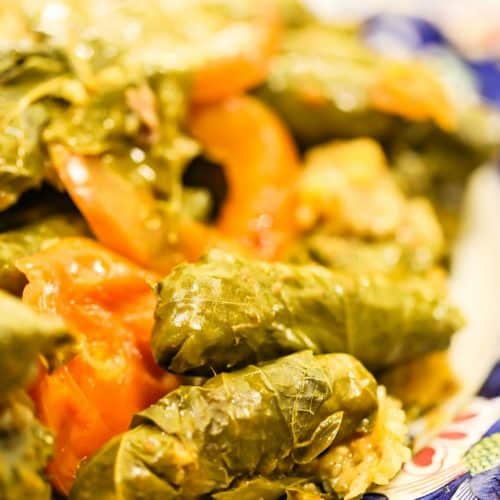
Dolmades Recipe
Ingredients
- 1 jar Grape Leaves pickled
- 4 cups Rice soaked for 30 minutes
- 3½ tsp Salt
- ½ tsp Black Pepper
- 4 tsp Seven Spices
- 2 tsp Dried Mint
- 4 Tomatoes 1 diced + 3 sliced
- 1 Onion diced
- 6 oz Lamb ground
- ⅓ cup Tomato Paste
- 6 cups Lamb Broth
- 2 tbsp Olive Oil
Instructions
- Remove stems from grape leaves and any torn leaves. (Most leaves can be cut in half - smaller ones remain whole.)
- Mix herbs, spices, tomato, onion, lamb, olive oil, salt and pepper into rice. Mix well by hand until well combined.
- Grease the bottom of the pot and put foil in the bottom. Line the bottom of the pot with any discarded grape leaf pieces. Top with tomato slices.
- Lay out a single grape leaf. Place a small amount of filling in the centre. Fold over edges and the roll up grape leaf longways.
- Roll tightly so they don’t come apart but not so tight that they tear.
- Place the rolled grape leaves tightly against each other in layers. Place a plate that is heatproof and slightly smaller than the pot on top of the grape leaves to keep in place during the boiling process.
- Mix the tomato puree into the broth until dissolved. Pour the broth mixture over the grape leaves keeping the plate in place. Bring to a boil.
- Turn down to a simmer and cook like you would rice. Once the water has evaporated below the top layer of grape leaves, remove the plate.
- Cooks for about an hour and a half until all the liquid has evaporated.
- Remove from the heat and allow to rest in the pot for ten minutes.
- Remove the lid and place the serving plate over the pot. Flip pot so grape leaves are transferred to the plate.
- Let the contents settle for a couple of minutes before removing the pot. Serve with yogurt.


